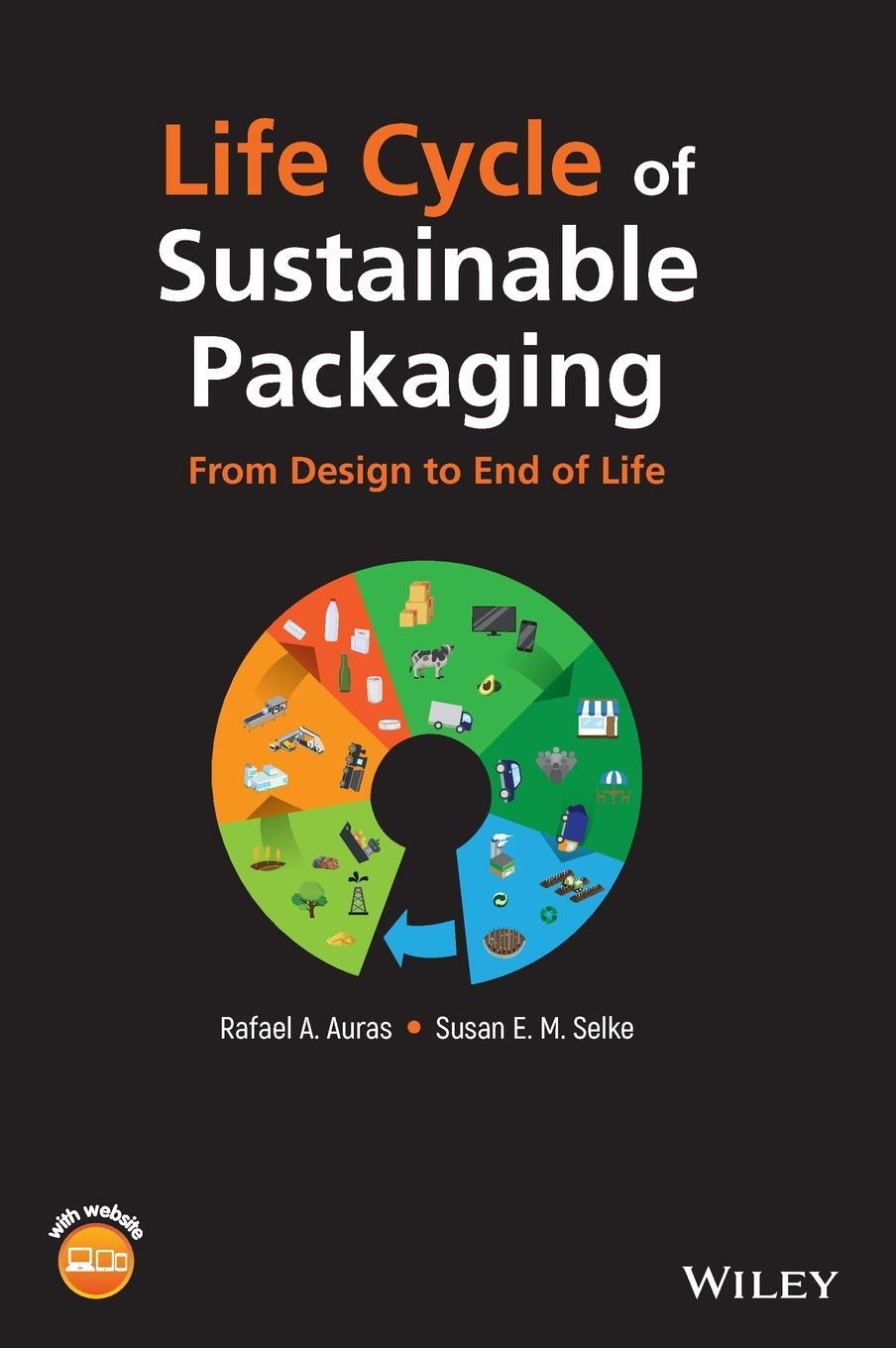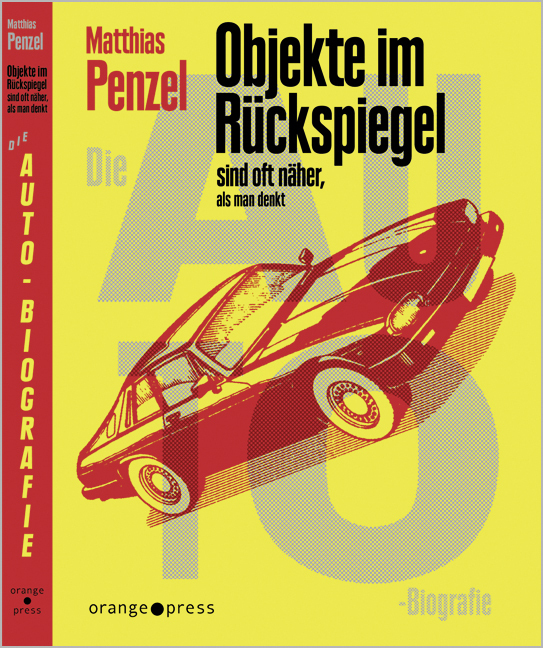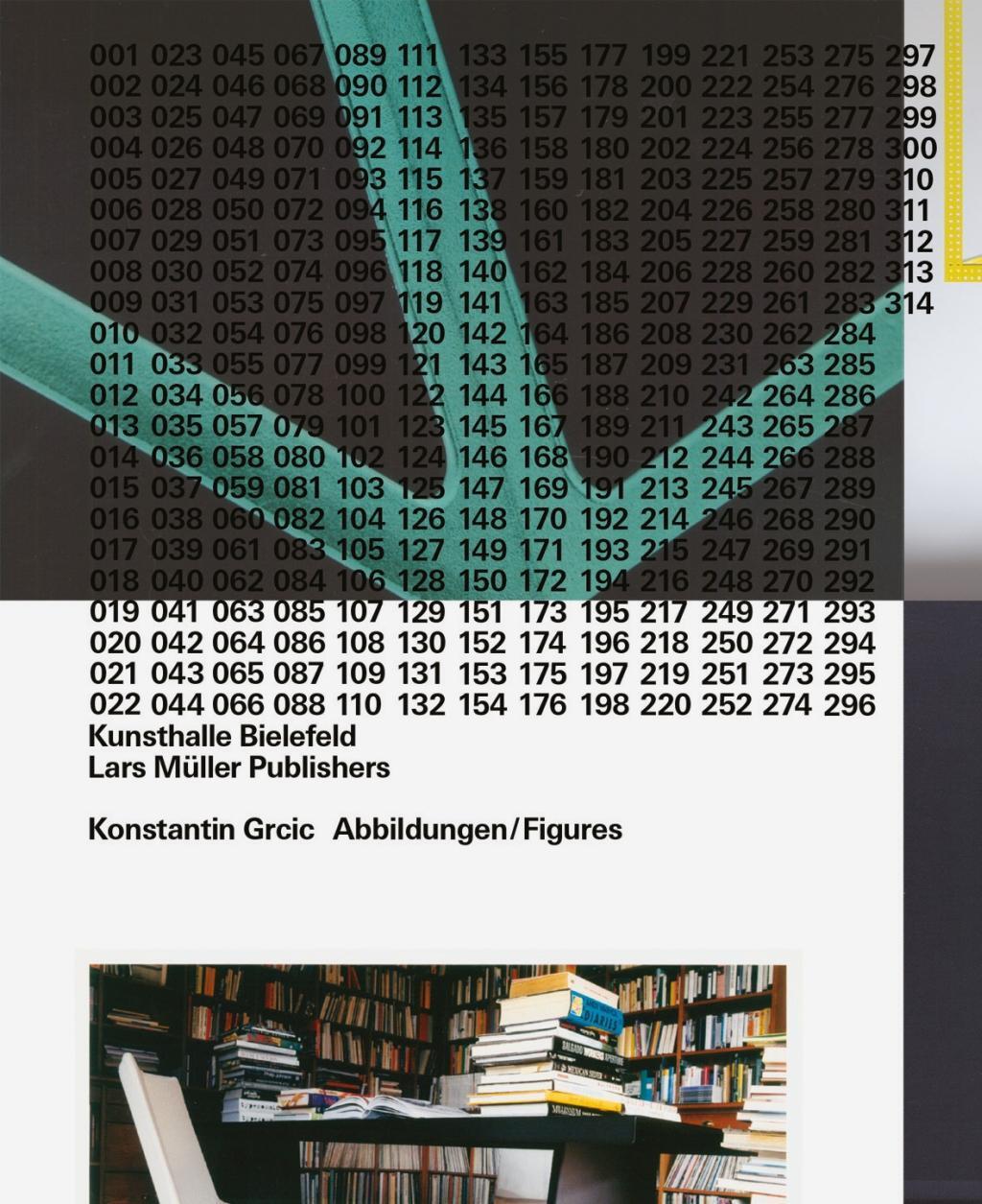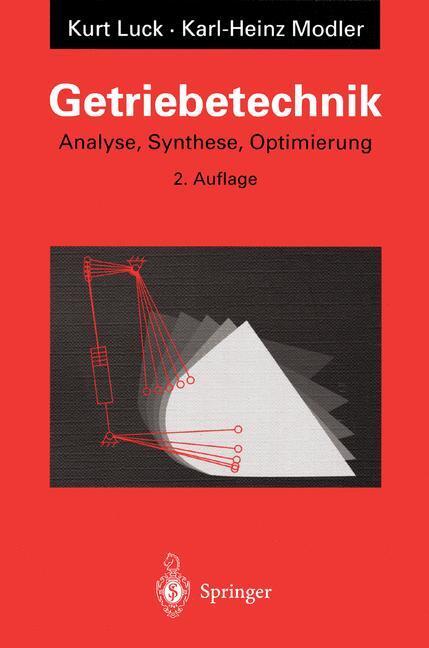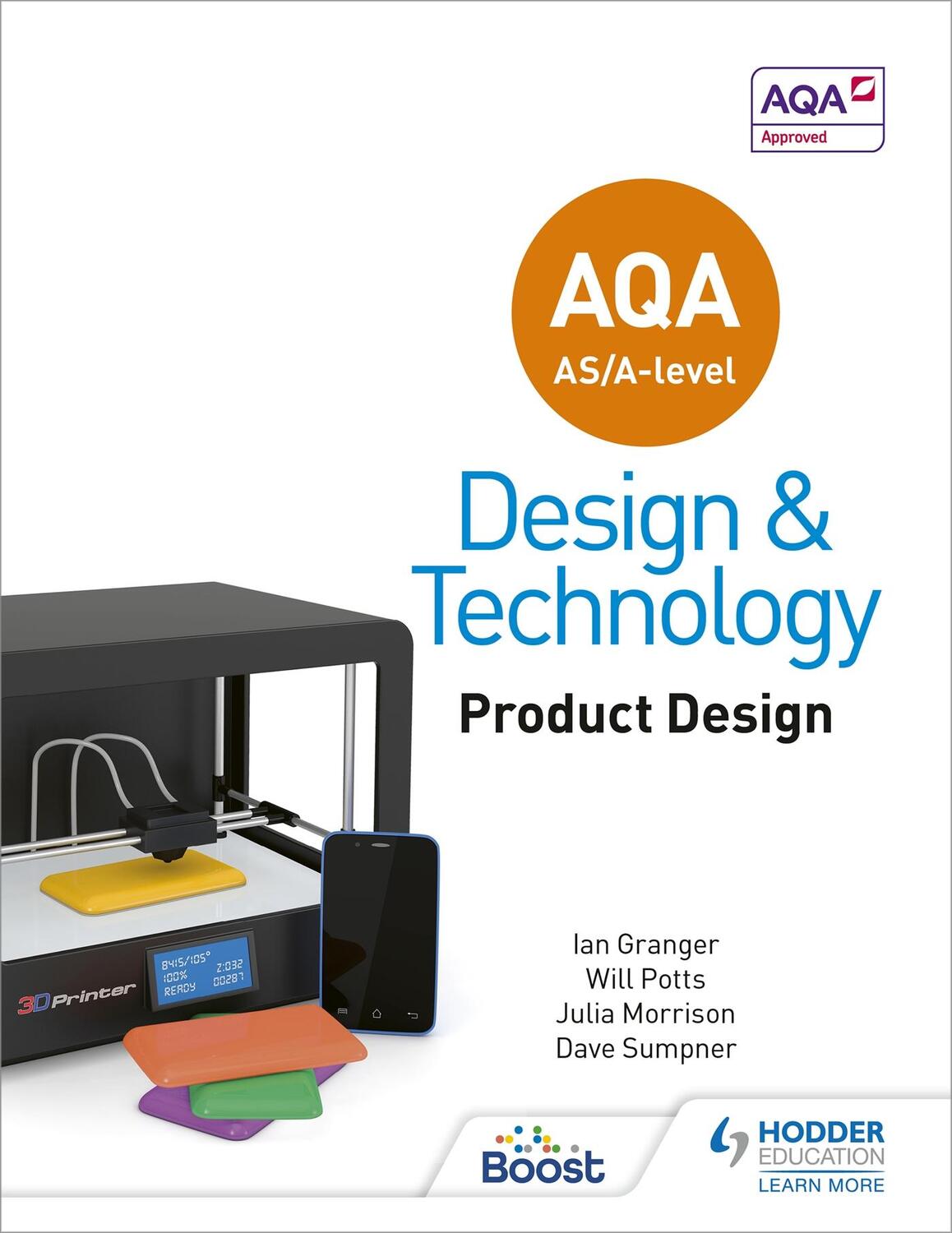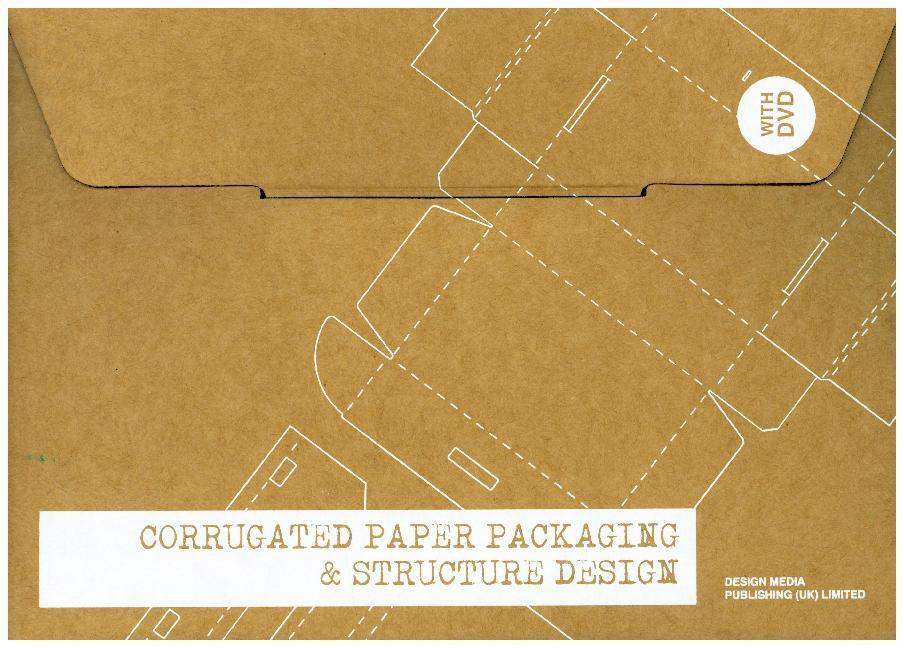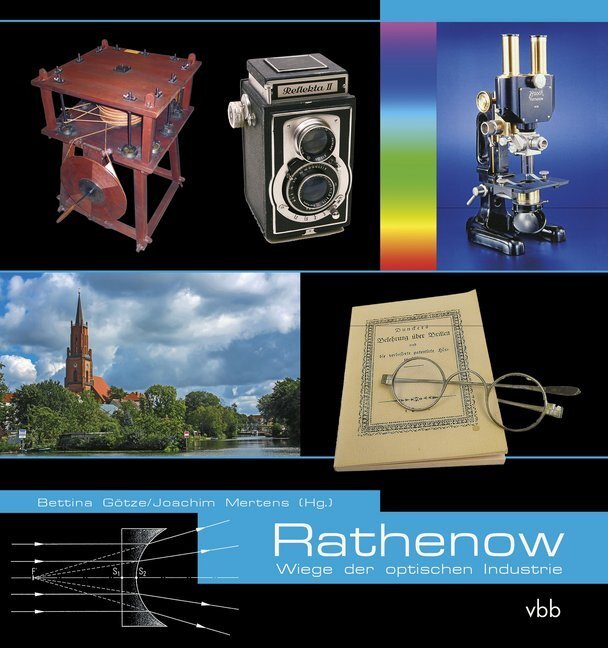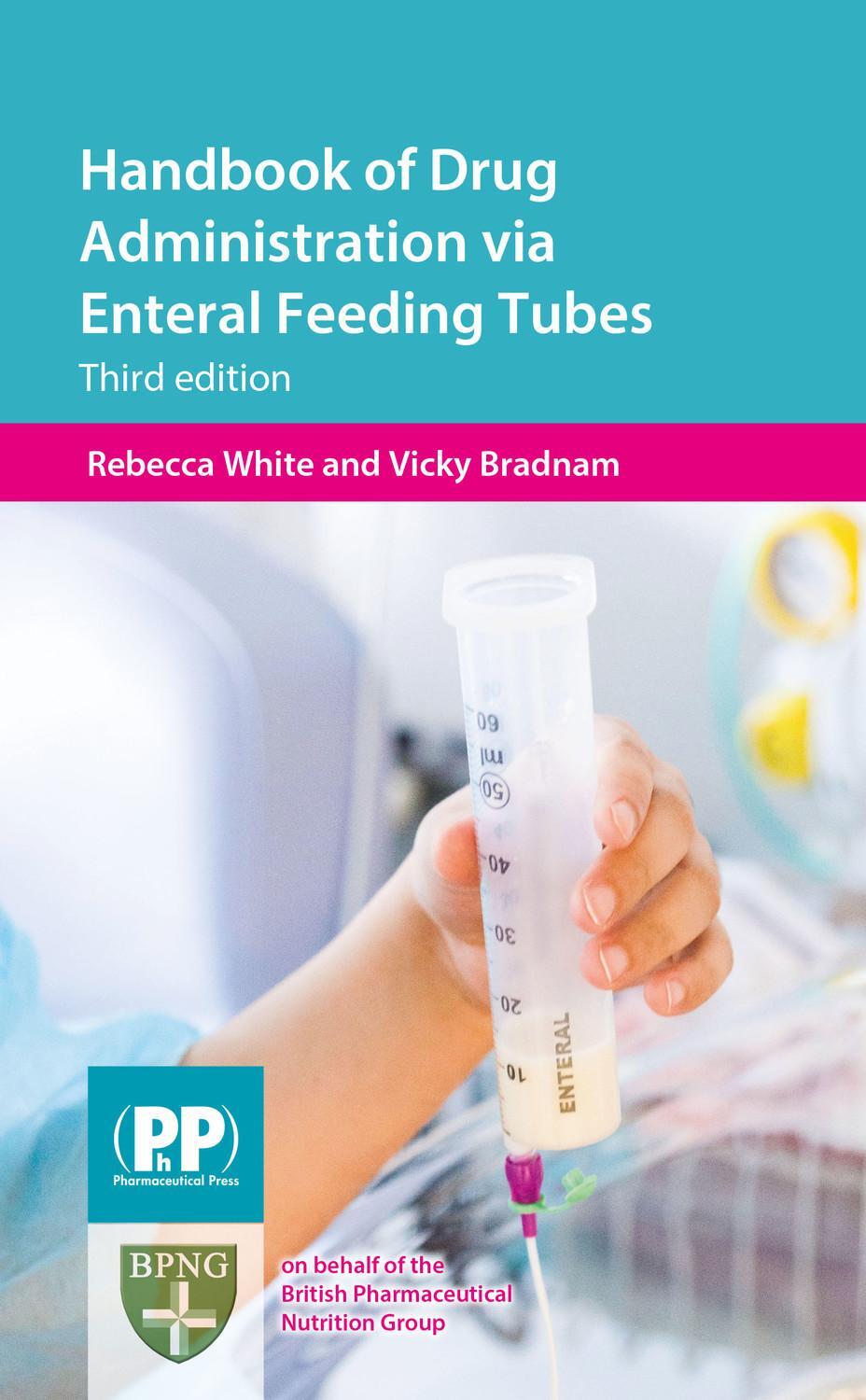169,50 €*
Versandkostenfrei per Post / DHL
Aktuell nicht verfügbar
An expert review of packaging's role in sustainability and the environment
In Life Cycle of Sustainable Packaging: From Design to End of Life, a team of distinguished researchers delivers an authoritative and accessible explanation of the role played by packaging in sustainable development and the circular economy. The book offers expansive coverage of every aspect of the packaging life cycle, from design to management and end of life. It is a holistic and integrated evaluation of packaging's environmental footprint.
The authors show students and readers how to incorporate design and life cycle concepts into the development of sustainable packaging materials and help them understand critical background information about pollution and risk management. They also provide readers with learning objectives and self-study questions for each chapter that help them retain and understand the ideas discussed in the book.
Readers will also find:
* A thorough introduction to the role of packaging in sustainable development
* An in-depth examination of design thinking in the packaging design process, including the five stages of design thinking and innovation tools
* Comprehensive discussions of pollution and risk management, as well as soil, water, and air pollution
* Expansive treatments of global climate change, life cycle assessment, and municipal solid waste.
Perfect for undergraduate and graduate students learning about sustainability and packaging, Life Cycle of Sustainable Packaging: From Design to End of Life will earn a place in the libraries of chemical, biochemical, plastics, materials science, and packaging engineers.
An expert review of packaging's role in sustainability and the environment
In Life Cycle of Sustainable Packaging: From Design to End of Life, a team of distinguished researchers delivers an authoritative and accessible explanation of the role played by packaging in sustainable development and the circular economy. The book offers expansive coverage of every aspect of the packaging life cycle, from design to management and end of life. It is a holistic and integrated evaluation of packaging's environmental footprint.
The authors show students and readers how to incorporate design and life cycle concepts into the development of sustainable packaging materials and help them understand critical background information about pollution and risk management. They also provide readers with learning objectives and self-study questions for each chapter that help them retain and understand the ideas discussed in the book.
Readers will also find:
* A thorough introduction to the role of packaging in sustainable development
* An in-depth examination of design thinking in the packaging design process, including the five stages of design thinking and innovation tools
* Comprehensive discussions of pollution and risk management, as well as soil, water, and air pollution
* Expansive treatments of global climate change, life cycle assessment, and municipal solid waste.
Perfect for undergraduate and graduate students learning about sustainability and packaging, Life Cycle of Sustainable Packaging: From Design to End of Life will earn a place in the libraries of chemical, biochemical, plastics, materials science, and packaging engineers.
Rafael A. Auras is a Professor in the School of Packaging at Michigan State University. He is a co-editor of both editions of Poly(lactic acid): Synthesis, Structures, Processing, Applications, and End of Life.
Susan E.M. Selke is an emeritus Professor and former Director of the School of Packaging at Michigan State University. She is a co-editor of both editions of Poly(lactic acid): Synthesis, Structures, Processing, Applications, and End of Life.
Preface xxii
About the Companion Website xxv
1 The Role of Packaging in Sustainable Development 1
1.1 Learning Objectives 1
1.2 Introduction 1
1.3 Packaging and Sustainable Development 1
1.4 Sustainability 5
1.5 Sustainability Timeline 7
1.6 United Nations Sustainable Development Goals (UN-SDGs) 11
1.7 Sustainability Indicators (SIs) 21
1.8 Life Cycle Thinking 23
1.9 Circular Economy 25
1.10 Packaging for Sustainable Development 26
1.11 Sustainable Packaging Organizations around the World and Their Criteria 28
1.12 Tools to Evaluate Sustainable Packaging 29
1.13 Case Study 1.1. The Living Planet Index (LPI) 30
1.14 Case Study 1.2. Doughnut Economics 31
1.15 Study Questions 32
1.16 Additional Resources 33
References 34
2 Design Thinking: The Packaging Design Process 37
Euihark Lee
2.1 Learning Objectives 37
2.2 Introduction 37
2.2.1 Creativity vs. Innovation 37
2.2.2 Design of Packaging for Sustainability 39
2.3 The Design Thinking Process 40
2.3.1 What Is Design Thinking? 40
2.3.2 The Five Stages of Design Thinking 41
2.4 Tools for Thinking about Innovation 42
2.4.1 Empathy Mapping 42
2.4.2 Mind Map 43
2.4.3 Brainstorming 44
2.5 Packaging Design Process 44
2.5.1 Applying the Design Process to the Packaging System 44
2.5.2 Material Selection 45
2.5.3 Determining Packaging Features 46
2.5.4 Design Shape 47
2.5.5 Color and Packaging 49
2.5.6 Graphics in Packaging 50
2.5.7 Packaging Design Tools 52
2.6 Case Study 2.1. Heinz Single-serve Ketchup Dip and Squeeze 54
2.7 Case Study 2.2. Design for Recyclability 57
2.8 Study Questions 59
2.9 Additional Resources 59
References 59
3 Packaging in the Upstream and Downstream Supply Chains 63
3.1 Learning Objectives 63
3.2 Introduction 63
3.3 Resource Use 64
3.4 Packaging Materials 64
3.4.1 Metal 65
3.4.2 Glass 67
3.4.3 Wood 69
3.4.4 Paper and Paperboard 70
3.4.5 Plastics 71
3.5 Energy 74
3.5.1 Nonrenewables 75
3.5.1.1 Petroleum 76
3.5.1.2 Coal 77
3.5.1.3 Natural Gas 77
3.5.1.4 Nuclear 78
3.5.2 Renewables 78
3.5.2.1 Biomass 78
3.5.2.2 Hydropower 79
3.5.2.3 Wind 79
3.5.2.4 Solar Energy 79
3.5.2.5 Geothermal Energy 79
3.6 Components of the Packaging System 80
3.6.1 Primary Packaging 80
3.6.2 Secondary Packaging 80
3.6.3 Tertiary or Distribution Packaging 80
3.7 Parameters for Quantifying the Environmental Footprint (EFP) of Packaging Systems 81
3.8 Case Study 3.1. Cube Efficiency Estimation Using CAPE(r) 82
3.9 Study Questions 83
3.10 Additional Resources 85
References 85
4 Pollution and Risk Management 87
4.1 Learning Objectives 87
4.2 Introduction 87
4.3 Pollution Science 88
4.4 Risk Assessment and Management 89
4.4.1 Exposure Assessment 91
4.4.2 Hazard Identification 93
4.4.3 Dose-Response Assessment 94
4.4.4 Risk Characterization 97
4.4.4.1 Carcinogenic Risks 97
4.4.4.2 Noncarcinogenic Risks 99
4.5 Ecological Risk Assessment 100
4.6 Microbial Risk Assessment 101
4.7 Case Study 4.1. Estimation of the Health Risk of Dichloro diphenyl trichloroethane (DDT) and Polybrominated Diphenyl Ether (PBDE) 101
4.8 Study Questions 102
4.9 Additional Resources 102
References 102
5 Soil Pollution 105
5.1 Learning Objectives 105
5.2 Introduction 105
5.3 Surface Mining 105
5.4 Deforestation 106
5.5 Soil Acidity and Salinity 107
5.6 Soil Erosion 108
5.7 Agricultural Activities 108
5.8 Animal Waste 111
5.9 Industrial Waste 112
5.10 Invasive Species 113
5.11 Case Study 5.1. Kudzu as Invasive Species in the Southern US 113
5.12 Study Questions 114
5.13 Additional Resources 114
References 114
6 Water Pollution 117
6.1 Learning Objectives 117
6.2 Introduction 117
6.3 Groundwater 119
6.3.1 Point-Source Contamination 121
6.3.1.1 Hazardous Organic Chemicals 125
6.3.1.2 Landfill 125
6.3.2 Diffuse Source Contamination 126
6.3.2.1 Agrochemical Contamination 126
6.3.2.2 Saltwater Intrusion 127
6.3.2.3 Microbial Contamination 128
6.3.2.4 Gasoline Additives 129
6.3.2.5 Perchlorate 129
6.3.2.6 Arsenic 130
6.3.2.7 Acid-Mine Drainage 130
6.4 Surface Water 130
6.4.1 Marine Water Resources 130
6.4.2 Sources of Water Pollution 131
6.4.3 Sediments as Surface Water Contaminants 131
6.4.4 Metals as Surface Water Contaminants 132
6.4.4.1 Mercury 132
6.4.4.2 Arsenic 132
6.4.4.3 Chromium 132
6.4.4.4 Selenium 133
6.4.5 Nutrients and Eutrophication of Surface Waters 133
6.4.6 Organic Compounds in Water 134
6.4.7 Enteric Pathogens as Surface Water Contaminants 134
6.5 Groundwater and Surface Water Legislation 135
6.5.1 Total Maximum Daily Load (TMDL) 136
6.6 Case Study 6.1. Pine River Contamination Site 136
6.7 Case Study 6.2. The Flint Water Crisis 145
6.8 Study Questions 145
6.9 Additional Resources 146
References 146
7 Air Pollution 149
7.1 Learning Objectives 149
7.2 Introduction 149
7.3 Primary Air Pollutants 151
7.3.1 Carbon Monoxide (CO) 151
7.3.2 Hydrocarbons (HCs) 152
7.3.3 Particulate Matter (PM) 152
7.3.4 Sulfur Dioxide (SO 2) 153
7.3.5 Nitrogen Oxides (NOx) 154
7.3.6 Lead (Pb) 154
7.4 Secondary Pollutants 156
7.5 Clean Air Act 158
7.6 Case Study 7.1. Air Quality in Delhi, India, in Winter 161
7.7 Case Study 7.2. Air Quality in the US in Summer 163
7.8 Study Questions 163
7.9 Additional Resources 164
References 164
8 Global Climate Change 167
8.1 Learning Objectives 167
8.2 Introduction 167
8.3 Greenhouse Gases 169
8.4 Impacts on Global Climate 173
8.5 Climate Change Agreements 174
8.6 Case Study 8.1. History of the Intergovernmental Panel on Climate Change (IPCC) 175
8.7 Study Questions 176
8.8 Additional Resources 176
References 177
9 Life Cycle Assessment 179
9.1 Learning Objectives 179
9.2 Introduction 179
9.3 Provisions of LCA Study 181
9.4 Different Approaches to Conduct LCI Studies 183
9.5 Steps of an LCA Study 184
9.5.1 Goal and Scope Definition of an LCA 185
9.5.2 Function, Functional Unit, and Reference Flow 188
9.5.3 Life Cycle Inventory Modeling Framework 190
9.5.3.1 Flows and Multifunctionality 190
9.5.3.2 Completeness/Cut-off and Loops 199
9.5.3.3 Provisions for LCI according to Situations A, B, and C of LCA 200
9.5.4 Impact Assessment 200
9.5.5 Interpretation 203
9.5.5.1 Evaluation of the Results 203
9.5.5.2 Analysis of the Results 203
9.5.5.3 Formulation of Conclusions and Recommendations 207
9.6 LCA Software 207
9.7 Case Study 9.1. LCA Study of Beverage Packaging Systems 207
9.8 Study Questions 213
9.9 Additional Resources 214
References 214
10 Municipal Solid Waste 217
10.1 Learning Objectives 217
10.2 Introduction 217
10.3 World Picture of Municipal Solid Waste 218
10.4 Environmental Kuznets Curve (EKC) 218
10.5 Municipal Solid Waste in the US 223
10.6 Municipal Solid Waste in Different US States 225
10.7 Municipal Solid Waste Management Approaches 227
10.8 Case Study 10.1 - Environmental Footprint of PET Bottles Managed According to the US EPA Waste Management Hierarchy 229
10.9 Study Questions 230
10.10 Additional Resources 230
References 231
11 Reduction 233
11.1 Learning Objectives 233
11.2 Introduction 233
11.3 Reduction 234
11.4 Reduction in Packaging 234
11.4.1 Glass 235
11.4.2 Metal 235
11.4.3 Paper, Paperboard, and Corrugated Board 236
11.4.4 Plastic 237
11.5 Case Study 11.1. Bacon Packaging 239
11.6 Study Questions 244
11.7 Additional Resources 244
References 245
12 Reuse 247
12.1 Learning Objectives 247
12.2 Introduction 247
12.3 Reuse 248
12.4 Reuse in Packaging 250
12.4.1 Metal 252
12.4.2 Glass 253
12.4.3 Paper, Paperboard, and Corrugated Board 254
12.4.4 Plastic 254
12.5 Case Study 12.1. Reusable Cups 256
12.6 Case Study 12.2. Reusable Plastic Containers (RPC) 257
12.7 Study Questions 259
12.8 Additional Resources 259
References 260
13 Recycling 263
13.1 Learning Objectives 263
13.2 Introduction 263
13.3 Requirements for Successful Recycling 265
13.3.1 Consumer Engagement 265
13.3.1.1 Motivation 265
13.3.1.2 Convenience 267
13.3.1.3 Education/Publicity 268
13.3.2 Collection 269
13.3.2.1 Curbside Collection 270
13.3.2.2 Multidwelling Collection 270
13.3.2.3 Drop-off Sites 271
13.3.2.4 Deposit Systems 271
13.3.3 Sortation 277
13.3.4 Reprocessing 279
13.3.5 End Markets 279
13.4 Recycling of Packaging Materials 280
13.4.1 Closed- and Open-Loop Recycling 281
13.5 Metal Recycling 285
13.5.1 Steel Recycling 286
13.5.2 Aluminum Recycling 288
13.6 Glass Recycling 291
13.7 Paper, Paperboard, and Corrugated Board Recycling 294
13.8 Plastics Recycling 299
13.9 Labeling 306
13.10 Case Study 13.1. Environmental Footprint of Recycling Polymeric Resins 307
13.11 Case Study 13.2. End-of-Life Scenario of PLA, PET, and PS Clamshells 307
13.12 Study Questions 310
13.13 Additional Resources 311
References 312
14 Aerobic and Anaerobic Biodegradation 317
14.1 Learning Objectives 317
14.2 Introduction 317
14.3 Aerobic Biodegradation 319
14.3.1 Composting 320
14.3.1.1 Home/Backyard Composting 320
14.3.1.2 Industrial Composting 320
14.3.1.3 Factors Affecting Backyard and Industrial Composting Operations 322
14.3.2 Agricultural Soils 324
14.3.3 Other Mostly Aerobic Degradation Environments 325
14.3.3.1 Soil Biodegradation 325
14.3.3.2 Aquatic Biodegradation 326
14.3.4 Measuring Aerobic Biodegradation 326
14.3.5 Standards and Certifications for Aerobic Biodegradable Materials 327
14.3.6 Bio-based Carbon Content 332
14.4 Anaerobic Biodegradation 332
14.4.1 Standards and Certifications for Anaerobic Biodegradable Materials 335
14.5 Main Factors Affecting Aerobic and Anaerobic Biodegradation 335
14.6 Biodegradation of Packaging Materials 337
14.7 Paper Biodegradation 338
14.8 Polymer Biodegradation 341
14.9 Case Study 14.1. Biodegradation of Poly(butylene adipate-co-terephthalate) - PBAT - Films in Yard, Food, and Manure Compost 345
14.10 Case Study 14.2. Anaerobic Degradation of PLA Films 346
14.11 Study Questions 348
14.12 Additional Resources 350
References 350
15 Incineration of Municipal...
| Erscheinungsjahr: | 2022 |
|---|---|
| Fachbereich: | Management |
| Genre: | Wirtschaft |
| Rubrik: | Recht & Wirtschaft |
| Medium: | Buch |
| Seiten: | 496 |
| Inhalt: | 496 S. |
| ISBN-13: | 9781119878100 |
| ISBN-10: | 1119878101 |
| Sprache: | Englisch |
| Einband: | Gebunden |
| Autor: |
Auras, Rafael A
Selke, Susan E M |
| Hersteller: | Wiley |
| Maße: | 260 x 183 x 31 mm |
| Von/Mit: | Rafael A Auras (u. a.) |
| Erscheinungsdatum: | 11.10.2022 |
| Gewicht: | 1,121 kg |
Rafael A. Auras is a Professor in the School of Packaging at Michigan State University. He is a co-editor of both editions of Poly(lactic acid): Synthesis, Structures, Processing, Applications, and End of Life.
Susan E.M. Selke is an emeritus Professor and former Director of the School of Packaging at Michigan State University. She is a co-editor of both editions of Poly(lactic acid): Synthesis, Structures, Processing, Applications, and End of Life.
Preface xxii
About the Companion Website xxv
1 The Role of Packaging in Sustainable Development 1
1.1 Learning Objectives 1
1.2 Introduction 1
1.3 Packaging and Sustainable Development 1
1.4 Sustainability 5
1.5 Sustainability Timeline 7
1.6 United Nations Sustainable Development Goals (UN-SDGs) 11
1.7 Sustainability Indicators (SIs) 21
1.8 Life Cycle Thinking 23
1.9 Circular Economy 25
1.10 Packaging for Sustainable Development 26
1.11 Sustainable Packaging Organizations around the World and Their Criteria 28
1.12 Tools to Evaluate Sustainable Packaging 29
1.13 Case Study 1.1. The Living Planet Index (LPI) 30
1.14 Case Study 1.2. Doughnut Economics 31
1.15 Study Questions 32
1.16 Additional Resources 33
References 34
2 Design Thinking: The Packaging Design Process 37
Euihark Lee
2.1 Learning Objectives 37
2.2 Introduction 37
2.2.1 Creativity vs. Innovation 37
2.2.2 Design of Packaging for Sustainability 39
2.3 The Design Thinking Process 40
2.3.1 What Is Design Thinking? 40
2.3.2 The Five Stages of Design Thinking 41
2.4 Tools for Thinking about Innovation 42
2.4.1 Empathy Mapping 42
2.4.2 Mind Map 43
2.4.3 Brainstorming 44
2.5 Packaging Design Process 44
2.5.1 Applying the Design Process to the Packaging System 44
2.5.2 Material Selection 45
2.5.3 Determining Packaging Features 46
2.5.4 Design Shape 47
2.5.5 Color and Packaging 49
2.5.6 Graphics in Packaging 50
2.5.7 Packaging Design Tools 52
2.6 Case Study 2.1. Heinz Single-serve Ketchup Dip and Squeeze 54
2.7 Case Study 2.2. Design for Recyclability 57
2.8 Study Questions 59
2.9 Additional Resources 59
References 59
3 Packaging in the Upstream and Downstream Supply Chains 63
3.1 Learning Objectives 63
3.2 Introduction 63
3.3 Resource Use 64
3.4 Packaging Materials 64
3.4.1 Metal 65
3.4.2 Glass 67
3.4.3 Wood 69
3.4.4 Paper and Paperboard 70
3.4.5 Plastics 71
3.5 Energy 74
3.5.1 Nonrenewables 75
3.5.1.1 Petroleum 76
3.5.1.2 Coal 77
3.5.1.3 Natural Gas 77
3.5.1.4 Nuclear 78
3.5.2 Renewables 78
3.5.2.1 Biomass 78
3.5.2.2 Hydropower 79
3.5.2.3 Wind 79
3.5.2.4 Solar Energy 79
3.5.2.5 Geothermal Energy 79
3.6 Components of the Packaging System 80
3.6.1 Primary Packaging 80
3.6.2 Secondary Packaging 80
3.6.3 Tertiary or Distribution Packaging 80
3.7 Parameters for Quantifying the Environmental Footprint (EFP) of Packaging Systems 81
3.8 Case Study 3.1. Cube Efficiency Estimation Using CAPE(r) 82
3.9 Study Questions 83
3.10 Additional Resources 85
References 85
4 Pollution and Risk Management 87
4.1 Learning Objectives 87
4.2 Introduction 87
4.3 Pollution Science 88
4.4 Risk Assessment and Management 89
4.4.1 Exposure Assessment 91
4.4.2 Hazard Identification 93
4.4.3 Dose-Response Assessment 94
4.4.4 Risk Characterization 97
4.4.4.1 Carcinogenic Risks 97
4.4.4.2 Noncarcinogenic Risks 99
4.5 Ecological Risk Assessment 100
4.6 Microbial Risk Assessment 101
4.7 Case Study 4.1. Estimation of the Health Risk of Dichloro diphenyl trichloroethane (DDT) and Polybrominated Diphenyl Ether (PBDE) 101
4.8 Study Questions 102
4.9 Additional Resources 102
References 102
5 Soil Pollution 105
5.1 Learning Objectives 105
5.2 Introduction 105
5.3 Surface Mining 105
5.4 Deforestation 106
5.5 Soil Acidity and Salinity 107
5.6 Soil Erosion 108
5.7 Agricultural Activities 108
5.8 Animal Waste 111
5.9 Industrial Waste 112
5.10 Invasive Species 113
5.11 Case Study 5.1. Kudzu as Invasive Species in the Southern US 113
5.12 Study Questions 114
5.13 Additional Resources 114
References 114
6 Water Pollution 117
6.1 Learning Objectives 117
6.2 Introduction 117
6.3 Groundwater 119
6.3.1 Point-Source Contamination 121
6.3.1.1 Hazardous Organic Chemicals 125
6.3.1.2 Landfill 125
6.3.2 Diffuse Source Contamination 126
6.3.2.1 Agrochemical Contamination 126
6.3.2.2 Saltwater Intrusion 127
6.3.2.3 Microbial Contamination 128
6.3.2.4 Gasoline Additives 129
6.3.2.5 Perchlorate 129
6.3.2.6 Arsenic 130
6.3.2.7 Acid-Mine Drainage 130
6.4 Surface Water 130
6.4.1 Marine Water Resources 130
6.4.2 Sources of Water Pollution 131
6.4.3 Sediments as Surface Water Contaminants 131
6.4.4 Metals as Surface Water Contaminants 132
6.4.4.1 Mercury 132
6.4.4.2 Arsenic 132
6.4.4.3 Chromium 132
6.4.4.4 Selenium 133
6.4.5 Nutrients and Eutrophication of Surface Waters 133
6.4.6 Organic Compounds in Water 134
6.4.7 Enteric Pathogens as Surface Water Contaminants 134
6.5 Groundwater and Surface Water Legislation 135
6.5.1 Total Maximum Daily Load (TMDL) 136
6.6 Case Study 6.1. Pine River Contamination Site 136
6.7 Case Study 6.2. The Flint Water Crisis 145
6.8 Study Questions 145
6.9 Additional Resources 146
References 146
7 Air Pollution 149
7.1 Learning Objectives 149
7.2 Introduction 149
7.3 Primary Air Pollutants 151
7.3.1 Carbon Monoxide (CO) 151
7.3.2 Hydrocarbons (HCs) 152
7.3.3 Particulate Matter (PM) 152
7.3.4 Sulfur Dioxide (SO 2) 153
7.3.5 Nitrogen Oxides (NOx) 154
7.3.6 Lead (Pb) 154
7.4 Secondary Pollutants 156
7.5 Clean Air Act 158
7.6 Case Study 7.1. Air Quality in Delhi, India, in Winter 161
7.7 Case Study 7.2. Air Quality in the US in Summer 163
7.8 Study Questions 163
7.9 Additional Resources 164
References 164
8 Global Climate Change 167
8.1 Learning Objectives 167
8.2 Introduction 167
8.3 Greenhouse Gases 169
8.4 Impacts on Global Climate 173
8.5 Climate Change Agreements 174
8.6 Case Study 8.1. History of the Intergovernmental Panel on Climate Change (IPCC) 175
8.7 Study Questions 176
8.8 Additional Resources 176
References 177
9 Life Cycle Assessment 179
9.1 Learning Objectives 179
9.2 Introduction 179
9.3 Provisions of LCA Study 181
9.4 Different Approaches to Conduct LCI Studies 183
9.5 Steps of an LCA Study 184
9.5.1 Goal and Scope Definition of an LCA 185
9.5.2 Function, Functional Unit, and Reference Flow 188
9.5.3 Life Cycle Inventory Modeling Framework 190
9.5.3.1 Flows and Multifunctionality 190
9.5.3.2 Completeness/Cut-off and Loops 199
9.5.3.3 Provisions for LCI according to Situations A, B, and C of LCA 200
9.5.4 Impact Assessment 200
9.5.5 Interpretation 203
9.5.5.1 Evaluation of the Results 203
9.5.5.2 Analysis of the Results 203
9.5.5.3 Formulation of Conclusions and Recommendations 207
9.6 LCA Software 207
9.7 Case Study 9.1. LCA Study of Beverage Packaging Systems 207
9.8 Study Questions 213
9.9 Additional Resources 214
References 214
10 Municipal Solid Waste 217
10.1 Learning Objectives 217
10.2 Introduction 217
10.3 World Picture of Municipal Solid Waste 218
10.4 Environmental Kuznets Curve (EKC) 218
10.5 Municipal Solid Waste in the US 223
10.6 Municipal Solid Waste in Different US States 225
10.7 Municipal Solid Waste Management Approaches 227
10.8 Case Study 10.1 - Environmental Footprint of PET Bottles Managed According to the US EPA Waste Management Hierarchy 229
10.9 Study Questions 230
10.10 Additional Resources 230
References 231
11 Reduction 233
11.1 Learning Objectives 233
11.2 Introduction 233
11.3 Reduction 234
11.4 Reduction in Packaging 234
11.4.1 Glass 235
11.4.2 Metal 235
11.4.3 Paper, Paperboard, and Corrugated Board 236
11.4.4 Plastic 237
11.5 Case Study 11.1. Bacon Packaging 239
11.6 Study Questions 244
11.7 Additional Resources 244
References 245
12 Reuse 247
12.1 Learning Objectives 247
12.2 Introduction 247
12.3 Reuse 248
12.4 Reuse in Packaging 250
12.4.1 Metal 252
12.4.2 Glass 253
12.4.3 Paper, Paperboard, and Corrugated Board 254
12.4.4 Plastic 254
12.5 Case Study 12.1. Reusable Cups 256
12.6 Case Study 12.2. Reusable Plastic Containers (RPC) 257
12.7 Study Questions 259
12.8 Additional Resources 259
References 260
13 Recycling 263
13.1 Learning Objectives 263
13.2 Introduction 263
13.3 Requirements for Successful Recycling 265
13.3.1 Consumer Engagement 265
13.3.1.1 Motivation 265
13.3.1.2 Convenience 267
13.3.1.3 Education/Publicity 268
13.3.2 Collection 269
13.3.2.1 Curbside Collection 270
13.3.2.2 Multidwelling Collection 270
13.3.2.3 Drop-off Sites 271
13.3.2.4 Deposit Systems 271
13.3.3 Sortation 277
13.3.4 Reprocessing 279
13.3.5 End Markets 279
13.4 Recycling of Packaging Materials 280
13.4.1 Closed- and Open-Loop Recycling 281
13.5 Metal Recycling 285
13.5.1 Steel Recycling 286
13.5.2 Aluminum Recycling 288
13.6 Glass Recycling 291
13.7 Paper, Paperboard, and Corrugated Board Recycling 294
13.8 Plastics Recycling 299
13.9 Labeling 306
13.10 Case Study 13.1. Environmental Footprint of Recycling Polymeric Resins 307
13.11 Case Study 13.2. End-of-Life Scenario of PLA, PET, and PS Clamshells 307
13.12 Study Questions 310
13.13 Additional Resources 311
References 312
14 Aerobic and Anaerobic Biodegradation 317
14.1 Learning Objectives 317
14.2 Introduction 317
14.3 Aerobic Biodegradation 319
14.3.1 Composting 320
14.3.1.1 Home/Backyard Composting 320
14.3.1.2 Industrial Composting 320
14.3.1.3 Factors Affecting Backyard and Industrial Composting Operations 322
14.3.2 Agricultural Soils 324
14.3.3 Other Mostly Aerobic Degradation Environments 325
14.3.3.1 Soil Biodegradation 325
14.3.3.2 Aquatic Biodegradation 326
14.3.4 Measuring Aerobic Biodegradation 326
14.3.5 Standards and Certifications for Aerobic Biodegradable Materials 327
14.3.6 Bio-based Carbon Content 332
14.4 Anaerobic Biodegradation 332
14.4.1 Standards and Certifications for Anaerobic Biodegradable Materials 335
14.5 Main Factors Affecting Aerobic and Anaerobic Biodegradation 335
14.6 Biodegradation of Packaging Materials 337
14.7 Paper Biodegradation 338
14.8 Polymer Biodegradation 341
14.9 Case Study 14.1. Biodegradation of Poly(butylene adipate-co-terephthalate) - PBAT - Films in Yard, Food, and Manure Compost 345
14.10 Case Study 14.2. Anaerobic Degradation of PLA Films 346
14.11 Study Questions 348
14.12 Additional Resources 350
References 350
15 Incineration of Municipal...
| Erscheinungsjahr: | 2022 |
|---|---|
| Fachbereich: | Management |
| Genre: | Wirtschaft |
| Rubrik: | Recht & Wirtschaft |
| Medium: | Buch |
| Seiten: | 496 |
| Inhalt: | 496 S. |
| ISBN-13: | 9781119878100 |
| ISBN-10: | 1119878101 |
| Sprache: | Englisch |
| Einband: | Gebunden |
| Autor: |
Auras, Rafael A
Selke, Susan E M |
| Hersteller: | Wiley |
| Maße: | 260 x 183 x 31 mm |
| Von/Mit: | Rafael A Auras (u. a.) |
| Erscheinungsdatum: | 11.10.2022 |
| Gewicht: | 1,121 kg |

